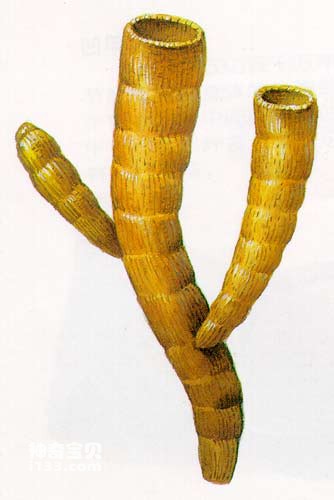Archaeocybeans appeared in the early Cambrian period and were extinct by the Jurassic. There is no modern creature that can be directly compared with them. In addition, their bones have various shapes, so scientists still do not understand them all. As for their soft body tissues during life, it is even more difficult to know.
Archaeozoans are marine benthic organisms. Most of them live fixedly on the seabed, but some groups may also move. Most of the fossils of ancient cupids are preserved in limestone, and they often live in symbiosis with animals such as calcareous algae, trilobites, brachiopods, gastropods, soft tongue snails and cone shells, thus proving that they are normal shallow-sea animals. Scientists speculate based on symbiotic blue-green algae that the most suitable living depth for ancient cup animals is 20 to 30 meters, with the deepest not exceeding 50 meters.
Ancient cup animals are probably only distributed in the warm and hot oceans between the Tropic of Cancer and the Tropic of Cancer, and can form ancient cup mounds or ancient cup layers, but bioherms formed by ancient cup animals are less common. Scientists speculate that the larvae of ancient cupids can float in the sea water. During the growth and development process, as their bodies and bones grow, they become adults and then sink to the bottom of the sea. They are fixed on the bottom of the sea with various types of anchors. The adults of some ancient cupids can lie flat on the seafloor in a disk shape, and they can also flip over.

Ancient Cup Animals
animal tags:
We created this article in conjunction with AI technology, then made sure it was fact-checked and edited by a Animals Top editor.